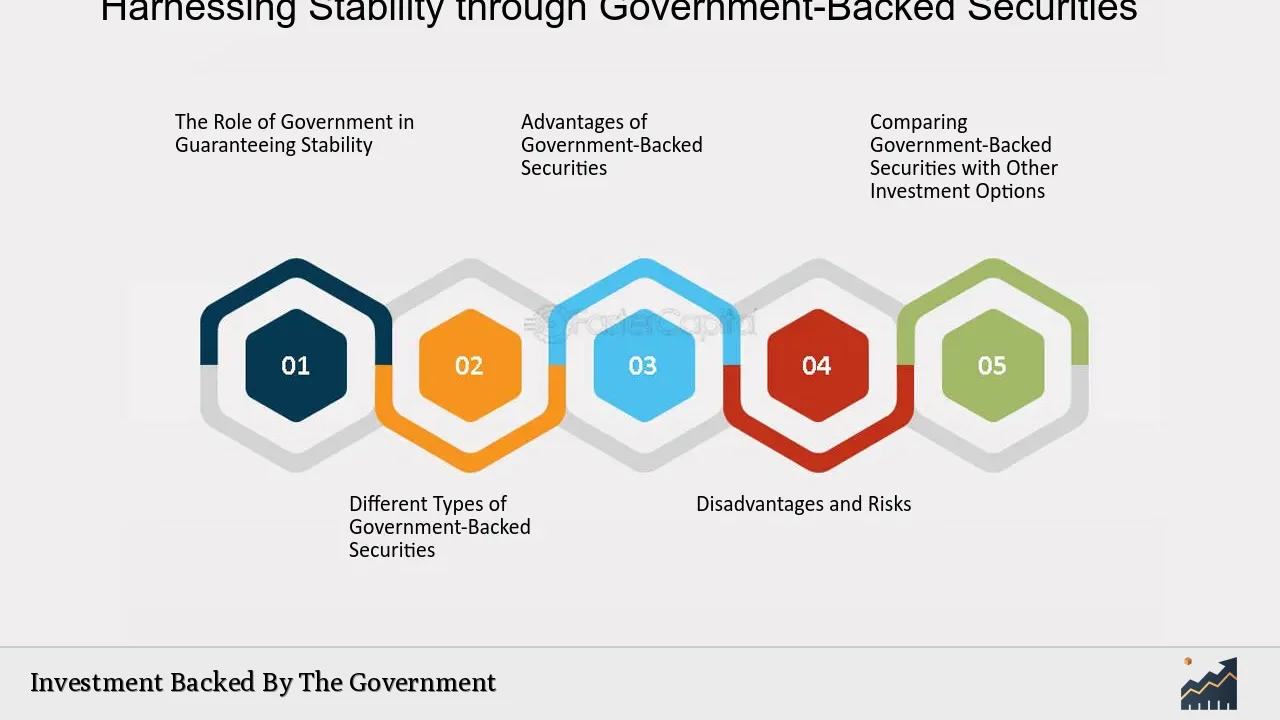Investing in government-backed securities is a popular choice among conservative investors seeking stability and security. These investments are typically considered low-risk due to the backing of government entities, which guarantees the return of principal at maturity. Various types of government-backed investments exist, including bonds, treasury bills, and savings bonds, each catering to different investment needs and time horizons.
Government securities play a crucial role in the financial market by providing funding for government operations and infrastructure projects. Investors are drawn to these securities for their safety, regular income, and potential tax benefits. Understanding the different types of government-backed investments can help individuals make informed decisions that align with their financial goals.
| Type of Investment | Description |
|---|---|
| Government Bonds | Long-term debt instruments issued by governments to raise funds. |
| Treasury Bills | Short-term securities sold at a discount, maturing in less than a year. |
| Savings Bonds | Low-denomination bonds that offer fixed interest rates over time. |
Understanding Government Securities
Government securities are debt instruments issued by national governments to finance various activities. They are considered one of the safest investment options available because they are backed by the full faith and credit of the issuing government. This means that investors can expect to receive their principal back at maturity along with any interest payments promised.
The most common types of government securities include Treasury bonds, Treasury notes, and Treasury bills in the United States. Each type has different maturities and interest payment structures:
- Treasury Bonds: Long-term investments with maturities ranging from 10 to 30 years. They pay semiannual interest.
- Treasury Notes: Medium-term securities with maturities between 2 and 10 years, also paying semiannual interest.
- Treasury Bills: Short-term instruments that mature in one year or less, sold at a discount and do not pay interest until maturity.
Investors can purchase these securities directly from the government or through brokers. The ease of buying and selling them on secondary markets adds to their appeal as a stable investment option.
Types of Government-Backed Investments
Several types of government-backed investments cater to different investor needs. Here are some prominent categories:
- Treasury Securities: These include T-bills, T-notes, and T-bonds. They are issued by the U.S. Department of the Treasury and are considered among the safest investments available.
- Savings Bonds: These are non-marketable bonds issued by the U.S. Treasury designed for individual investors. They offer fixed interest rates and can be purchased for as little as $25.
- Municipal Bonds: Issued by state or local governments, these bonds often provide tax-exempt interest income, making them attractive for investors in higher tax brackets.
- Government Agency Securities: Bonds issued by government-sponsored enterprises (GSEs) like Fannie Mae or Freddie Mac. Although not backed by the full faith of the U.S. government, they carry a strong implicit guarantee.
Each type serves different purposes and risk profiles, allowing investors to choose based on their financial goals.
Benefits of Investing in Government Securities
Investing in government-backed securities offers several advantages:
- Safety: Government securities are generally considered low-risk due to their backing by governmental entities, making them a safe haven during economic uncertainty.
- Regular Income: Many government securities provide periodic interest payments, offering a consistent income stream for investors.
- Liquidity: Government securities can be easily bought or sold in secondary markets, ensuring that investors can access their funds when needed.
- Tax Benefits: Certain government securities may offer tax exemptions on interest income at the federal or state level, enhancing their attractiveness.
These benefits make government-backed investments suitable for conservative investors looking to preserve capital while earning a modest return.
Risks Associated with Government Securities
While government-backed investments are generally safe, they are not without risks:
- Interest Rate Risk: The value of existing bonds may decrease if interest rates rise, leading to potential losses if sold before maturity.
- Inflation Risk: The fixed returns on many government securities may not keep pace with inflation over time, eroding purchasing power.
- Opportunity Cost: Investing heavily in low-yielding government securities may limit potential gains from higher-risk investments like stocks or corporate bonds.
Understanding these risks is crucial for investors when considering how much of their portfolio should be allocated to government-backed securities.
How to Invest in Government Securities
Investing in government-backed securities is straightforward:
1. Direct Purchase: Investors can buy Treasury securities directly from the U.S. Treasury through its website, TreasuryDirect.gov.
2. Brokerage Accounts: Many investors prefer purchasing through brokerage accounts where they can access a wider range of investment options including municipal bonds and agency securities.
3. Mutual Funds or ETFs: For those looking for diversification without managing individual bonds, investing in mutual funds or exchange-traded funds (ETFs) that focus on government securities is an option.
4. Automatic Reinvestment Plans: Some savings bonds allow for automatic reinvestment of interest payments into additional bonds, compounding returns over time.
By following these steps, investors can easily incorporate government-backed investments into their portfolios according to their financial strategies.
FAQs About Investment Backed By The Government
- What are government-backed investments?
Government-backed investments refer to financial products like bonds and treasury bills that are guaranteed by governmental entities. - How safe are government securities?
Government securities are considered very safe due to being backed by the full faith and credit of the issuing government. - Can I lose money investing in treasury bonds?
While treasury bonds are low-risk, you can lose money if you sell them before maturity during rising interest rates. - Are there tax benefits associated with municipal bonds?
Yes, municipal bonds often provide tax-exempt interest income at both federal and state levels. - How do I purchase savings bonds?
You can purchase savings bonds directly from the U.S. Treasury through its website or at select financial institutions.
Investing in government-backed securities offers a reliable way to secure your capital while generating income. By understanding the various types available and their associated benefits and risks, you can make informed decisions that align with your financial objectives.

